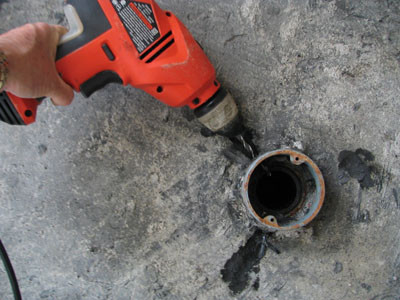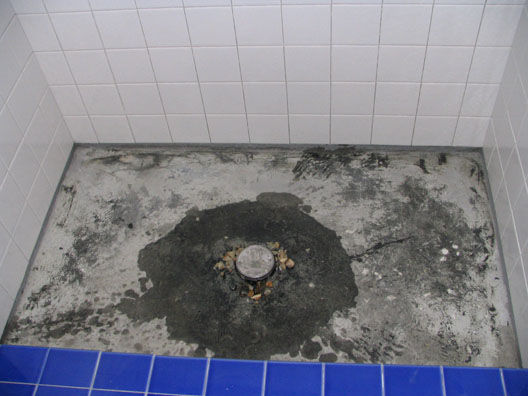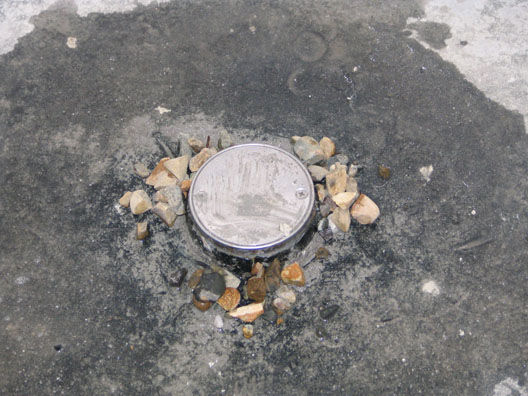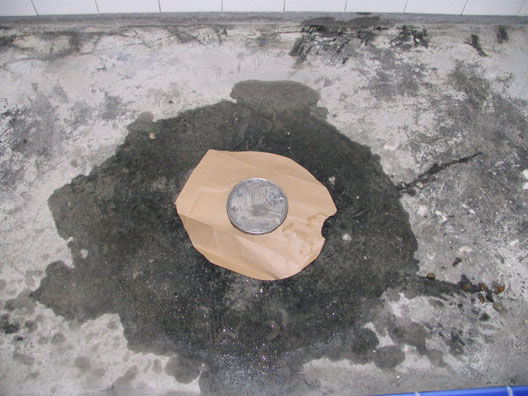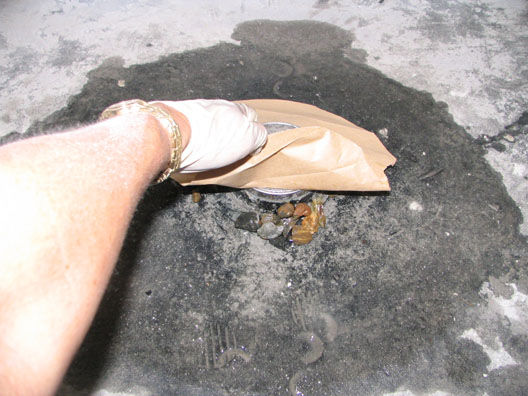HOW TO PREVENT TILED SHOWER PAN FAILURE DUE TO CLOGGED OR BLOCKED WEEP HOLES AT THE DRAIN
A common problem with tiled shower pans (the floor you stand on inside of shower) is that the weep holes into the sub-drain get plugged up during construction or from many years of hard water deposit build up. When these weep holes get plugged up, the homeowner has a future disaster on their hands.
The water from the showers has no where to go once it penetrates through the grout joints and into the pan. The water is supposed to settle down to the tar pan and drain into the weep holes. Instead, after the resident takes multiple showers, the water builds up, and, having no where to drain out, creates hydrostatic pressure and follows the path of least resistance; it flows up and through the curb and into the adjacent sheetrock walls, studs and flooring.
This is especially devastating in a two story home with a shower on the second floor. In that scenario, you have damage to the first floor ceiling as well.
There are three weep holes in the metal drain at the bottom of the pan where the hot mop (tarred pan created during construction) meets the drain. These weep holes can get plugged in a variety of ways.
The hot mopper (tar pan installer) must place a large nail in each of the three weep holes before the hot tar is applied to the pan. These weep holes should still have nails protruding from them after the hot mopper leaves.When I am called in to tear out and inspect a leaking shower stall, I have discovered many shower pans where the tile setter accidentally plugged the weep holes up.
- First, be sure when the nails are pulled that they are worked back and forth to prevent the tar on the nail tips from re-sealing in the drain weep holes.
- Second, the hot mopper's nails are pulled and the tile setter enlarges the weep holes with a drill. Caution, do not drill until you've read my page on how to do this properly!
- Third, the tile setter should take great pains to protect these weep holes from debris when doing their work.
- Fourth, the tile setter should stack a good amount of gravel around all three weep holes as shown in photo 1 and 2. Make sure the gravel is large enough in diameter that it doesn't block the small weep holes as well.
- Fifth, make a light weight paper donut—I use light weight, brown paper lunch bag material-- to surround the drain and protect the spaces around the gravel from being packed with the tile setter’s mortar as shown in photo 4 and 5. Now the tile setter is ready to pack their mortar into the pan.
